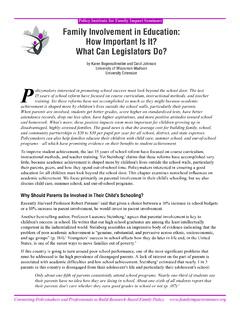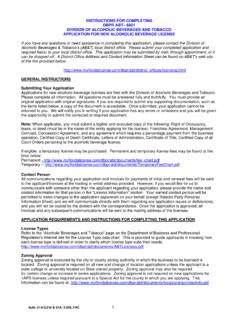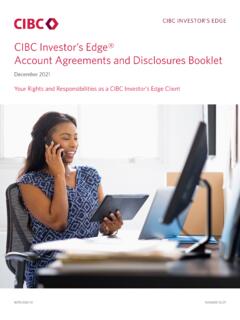Transcription of ENTREPRENEURSHIP FROM CHAPTER NO 1 TO 10 QUIZ 1
1 ENTREPRENEURSHIP FROM CHAPTER NO 1 TO 10 QUIZ 1 1. Any patents, trademarks , copyright or trade secrets held by the entrepreneur is known as 1. Disclosure document 2. Patent 3. Intellectual property 4. None of the mentioned 2. The organization will never be able to make the necessary changes without_____ 1. Top management commitment 2. Employees 3. Workers 4. None of the mentioned 3. The ways entrepreneurs make decisions. 1. Entrepreneurial domain. 2. Reverse brain storming 3. Heuristics brain storming 4. A trademark is 5. A word, symbol, name or device that a business uses to identify its goods. 1. A legal protection for information on foreign products. 2. Legal protection for intellectual works. 3. Legal protection for a product exported to another country. 6. locus of control is 1. A feeling 2. Attitude 3. Attribute 4. None of the above 7. Licensing arrangements have 1.
2 Low risk process involved 2. Easy way to generate incremental income 3. Several pitfalls 4. All of the above 8. Personal characteristics to be a successful entrepreneur includes 1. Understanding environment 2. Creating management options 3. Encourage open discussion 4. All of the above 9. International ENTREPRENEURSHIP is 1. Licensing 2. Exporting 3. Both of the mentioned options 4. None of the two mentioned Which of the following is not a characteristic that is helpful for an entrepreneur to have? a. Self-esteem b. Caution c. Drive d. Optimism 10. Hindrance for going in the international business is known as 1. Synergy 2. Turn key point 3. Trade barrier 4. Minority interest ENTREPRENEURSHIP (MGT 602) From CHAPTER No 13 to 22 Assignment No. 2 (Quiz) Questions: 1. A set of reasons for engaging in a particular behavior, especially human behavior is known as _____.
3 A. Values b. Vision c. ENTREPRENEURSHIP d. Motivation 2. Which of the following techniques is an excellent method for initially screening ideas and concepts in addition to generating new ideas? a. Focus group b. Brain storming c. Problem inventory analysis d. Reverse brainstorming 3. The creative process for problem solving that involves making the strange familiar in first step and then making the familiar strange through personal, direct or symbolic analogy is called _____. a. Synectics b. Gordon method c. Checklist method d. Scientific method 4. When the multiplicity of environments become too complex to handle, the international entrepreneurs often _____. a. Go for mergers b. Diversify c. Decentralize operations d. Sale out the foreign business 5. An entrepreneur into the hosiery business found out the reason his hosiery was not selling was due to its color. What could be the best source of this information? a. Supplier b.
4 Retailer c. Competition d. Government bureau 6. In some countries, point of purchase displays are not allowed in retail stores. Such differences are studied by international entrepreneurs under _____ environment. a. Economic b. Political c. Cultural d. Technological 7. Entrepreneurial success has been significant because of the culture and the political and economic systems in _____. a. European countries b. Asian countries c. Transition economies d. Middle east 8. Having more than 50% ownership position that provides the entrepreneur with managerial control is called _____. a. Joint venture b. Majority interest c. Horizontal merger d. Diversified activity merger 9. The under-developed or lesser developed countries need manufacturing technology and infrastructure and yet do not want to turn over substantial portion of their economy to foreign ownership. Which of the following is a solution to this dilemma? a. Management contract b. Indirect exporting c.
5 Licensing d. Turn-key project 10. The development of a new venture based on an inventor's work often requires _____. a. Expertise of an entrepreneur b. Heavy investment from financers c. Skilled human resources d. Highly educated staff ENTREPRENEURSHIP (MGT602) Quiz # 02 1. _____ is the process in marketing of dividing a market into distinct subsets (segments) that behave in the same way or have similar needs. a. Target Market b. Market Analysis c. Market Segmentation d. All of the Above 2. A business where an individual is both the owner and conductor of the business affairs is called_____. a. Sole Proprietorship b. partnership c. Corporation d. None of the above 3. In _____, the entrepreneur has the right to sell any assets. a. Proprietorship b. partnership c. Limited Liability Company d. None of the given options 4. _____are lists of the general tasks, or functions, and responsibilities of a position. a. Job Specifications b.
6 Job descriptions c. Job Requirements d. Jobholder 5. A_____ can be a budget, a plan for spending and saving future income. a. Marketing Plan b. Financial Plan c. Production Plan d. Organizational Plan 6. _____ involves an interest-bearing instrument, usually a loan, the payment of which is only indirectly related to sales and profits. a. Equity Financing b. Internal or External Funds c. Banking Funds d. Debt Financing 7. The idea and actions that explain how a firm will make its profits refers to a. Mission b. Goal c. Strategy d. Objective 8. SBIR stands for: a. Small Business Information Research b. Small Business Innovation Research c. Small Business Intelligent Research d. Small Business Inventory Research 9. _____is what the "W" in the SWOT analysis stands for. a. Wedge b. Work/life c. Worth of Business d. Weakness 10. Benefits can focus on which of these? a. Value and Cost b. Imitation and Innovation c. Internal and External aspects d.
7 None of the given options ENTREPRENEURSHIP (MGT602) Quiz No 1 1. An entrepreneur's primary motivation for starting a business is 1. To make money 2. To be independent 3. To be famous 4. To be powerful 2. To be successful in an entrepreneurial venture, you need 1. Money 2. Luck 3. Hard work 4. A good idea 3. Entrepreneurs are best as 1. Managers 2. Venture capitalists 3. Planners 4. Doers 4. A successful entrepreneur relies on which of the following for critical management advice 1. Internal management team 2. External management professionals 3. Financial sources 4. No one 5. Entrepreneurs are: 1. High risk takers 2. Moderate risk takers 3. Small risk takers 4. Doesn't matter 6. Entrepreneurs typically form 1. Service businesses 2. Manufacturing companies 3. Constructive companies 4. A variety of ventures 7. Entrepreneurs: 1. Are the life of the party 2.
8 Are bores at a cocktail party 3. Will never go to parties 4. Just fit into the crowd at a party 8. Entrepreneurs and ventures capitalists: 1. Get along well 2. Are the best friends 3. Are cordial friends 4. Are in conflict 9. An entrepreneur's primary motivation for high ego and need for achievement is based upon a relationship with: 1. Spouse 2. Mother 3. Father 4. Children 10. An individual usually begins his or her first significant entrepreneurial business enterprise at what age 1. Teens 2. Twenties 3. Forties 4. Fifties ENTREPRENEURSHIP (MGT602) Quiz # 1 1. NAFTA stands for: a) North American Free Trade Agreements b) North Asian Free Trade Agreements c) National Asian Free Trade Agreements d) National American Free Trade Agreements 2. The factor_____ is probably the most prevalent reason for mergers. a) Taxation b) Economies of scale c) Inflation d) Mergers 3. A _____ merger is a combination of two firms producing the same products but selling them in different geographic markets.
9 A) Diversified Activity Merger b) Product Extension Merger c) Vertical Merger d) Market Extension Merger 4. One of the most frequent reasons an entrepreneur forms a joint venture is to share the _____. a) Resources b) Cost c) Cost and risk of a project d) Profit 5. _____ involves having a foreign purchaser in the local market or using an export management firm. a) Direct Exporting b) Indirect Exporting c) Management Contracts d) Turn-Key Projects 6. The _____measures the payments that flow between any individual country and all other countries. a) International Business b) Economies of Scales c) Balance of Payment d) None of the given options 7. _____ is an entrepreneurial type who quickly identifies new promising business opportunities but rarely, if ever, follows through on the opportunity to create a successful new venture. a) Simplicity Sue b) Shotgun Sam c) Hidden Agenda Harry d) Inventor Irving 8. One study found that the typical minority business owner was the a) Oldest child in a blue-collar family and married.
10 B) Oldest child in a white-collar family and married. c) Youngest child in a blue-collar family and married. d) Youngest child in a white-collar family and married. 9. Traditional managers are: a) Deals with mistakes and failures b) Tries to avoid mistakes and surprises c) Attempts to hide risky projects from view until ready d) None of the given Options 10. Entrepreneurs are: a) Moderate risk taker b) High risk taker c) Avoidance d) Both b and c 11. Risk decisions are often postponed until a) Hard facts can be gathered or a consultant hired to illuminate the unknown. b) Hard facts can be gathered or an auditor hired to illuminate the unknown. c) There is no need to gather facts and hired a consultant/auditor d) None of the given options 12. _____ is one method of stimulating, and then capitalizing on, individuals in an organization who think that something can be done differently and better. a) Strategic Orientation b) Capitalization c) Intrapreneurship d) Management 13.










